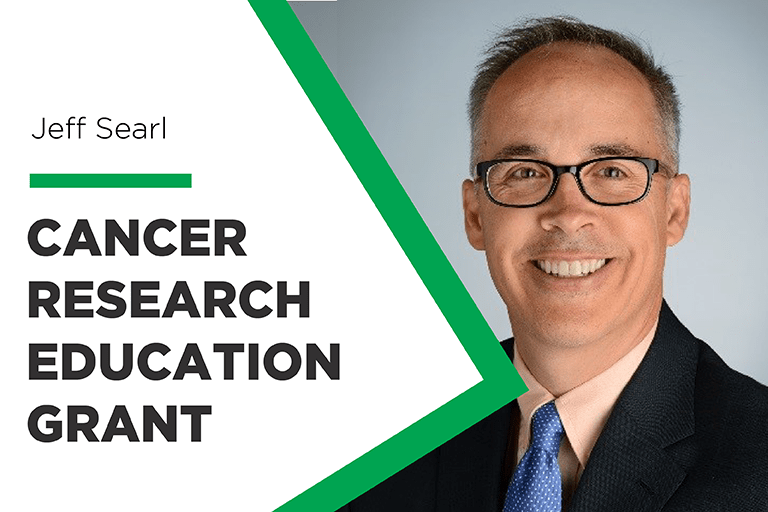ComArtSci Professor Jeff Searl has received a grant from the National Cancer Institute to create a virtual reality curriculum for healthcare professionals and students. It will initially focus on training students in nursing, medicine and speech-language pathology to both understand the differences between laryngectomy and tracheostomy patients and to provide care of their airway and communication needs.
Searl is collaborating with Andrew Dennis from the Games for Entertainment and Learning (GEL) Lab, Mary Kay Smith from The Learning and Assessment Center and College of Osteopathic Medicine, Peter LaPine from the Department of Communicative Sciences and Disorders, and Gayle Lourens from MSU’s College of Nursing, in order to create this innovative curriculum in the next two years.
Searl is a professor in the Department of Communicative Sciences and Disorders (CSD) in addition to being the associate chair and undergraduate program director of the department. He is the director of the Lip-Tongue-Larynx (LiTL) Lab, which aims to research how head and neck cancer and other diseases affect speech and voice production. Searl’s knowledge on the subject in collaboration with the work of Dennis, Smith, LaPine and Lourens is creating a one-of-a-kind research team to develop this cutting-edge curriculum.
“I think this project pulls together a unique group of collaborators that leverages strengths from several different units here at MSU,” said Searl. “This project builds a strong collaboration between CSD and the GEL Lab, which we have not historically had but should open opportunities for future training projects involving both units.”
Dennis, creative director of the GEL Lab, is an artist, designer and professor of practice within the Department of Media and Information. His skills in design, modeling and animation will be instrumental to create this curriculum with the help of a team of undergraduate and graduate students under his supervision.
The curriculum will be split into three separate modules, each unique to the learning experience. The first module will focus on foundational knowledge, such as identifying the head and neck anatomy and the alterations to breathing and speaking when there is a tracheostomy (breathing tube) or laryngectomy (removal of the voice box or larynx). In the second module, the students will engage with virtual patients to perform routine care as if they were visiting a general practitioner. Lastly, module three will provide the opportunity to experience when these types of patients need urgent care. In these situations, students will have to evaluate the symptoms of the patient, decide if they can solve the problem on their own, or if the patient needs to seek care elsewhere — including if this should be their head surgeon or oncologist. Both module two and three will have a set of four to eight distinctive clinical cases.
“One of the things that we're interested in doing is trying to also emphasize how some patient characteristics might come into play in these clinical encounters,” said Searl. This includes experiments like changing a patient's gender or race to see how the healthcare students interact with the virtual patient. If outcomes demonstrate that the care that students provided varies depending on the virtual patient’s race or gender, this will create teaching moments regarding issues such as clinician bias and healthcare inequities and differences.
“We thought that this curriculum might be a way to broaden the education and training that we can do for speech-language pathologists, nurses and physicians who provide care for tracheostomy and laryngectomy patients,” said Searl.
Ultimately, the curriculum will be available free of cost across virtual reality platforms so that training programs across the country and around the world can use it. Searl will also pursue further funding from the NCI after the VR curriculum is completed to investigate the curriculum’s learning outcomes of students and healthcare outcomes of patients on a broader scale.
Searl said he is excited to develop this virtual curriculum with MSU colleagues and the ways in which it could transform the care provided to tracheostomy and laryngectomy patients.
By Allie Horning
